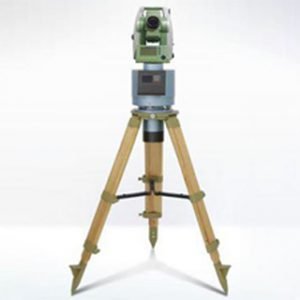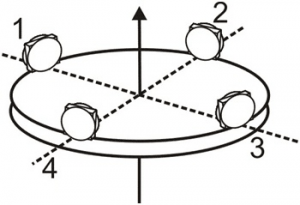North finder is widely used in the current society. Because of its professional craftsmanship, not many people know it, so when choosing a north finder, you don’t know where to start, don’t understand the price, and don’t understand some basic information. The editor has compiled some price analysis and application introductions of ERICCO’s North Finder for everyone. I hope I can help you!
First of all, we need to know that the north finder is a high-precision dual-axis dynamic tuned gyroscope, which is mainly used in borehole orientation instruments, drilling equipment control and survey, marine survey, three-dimensional scanner, radar, antenna, military vehicle and other fields.
The north finder is mainly used to quickly and autonomously determine the true north direction. After the azimuth angle is obtained, the device starts to move, and can continuously output changing dynamic inclination and azimuth angles. The product uses a very low-drift MEMS gyroscope for north finding and a built-in IMU for inclination measurement and azimuth calculation. It has the characteristics of small size, low price, low power consumption, long life, and high reliability.
With the development of navigation and positioning technology, the north finder has been widely used in various fields. Compared with the gyro-type north finder, the accelerometer-free gyro north finder has the characteristics of simple structure, fast response, low price, and good stability. It has a wide range of applications in navigation, exploration, mining, and engineering surveying, especially in shale gas exploration and mining, which has an urgent need. ER-FNS-03 Low-Cost FOG gyro North Finder adopts a closed-loop fiber optic gyroscope as the core component. It is mainly composed of inertial measurement units (IMU), digital signal processing unit, and the organizations of the mechanical parts. It can provide the carrier with true north azimuth angle. Products are widely used in coal mining, oil drilling, tunnel construction, and geodesy,
The accelerometer-free gyro north-seeking system is widely used in the application of geological shale gas exploration and mining. It makes full use of the advantages of small size, simple structure, high sensitivity, and high reliability of the accelerometer in the process of shale gas exploration and mining. Compared with FPGA-based Accelerometer data acquisition and processing, the output signal of the accelerometer is relatively weak, the current amplitude is extremely low, it is easy to be interfered with by external conditions, and the measurement is difficult. The north finder produced by ERICCO uses a discrete fast orthogonal wavelet transform. The method of (Mallat algorithm) denoises the output data of the accelerometer and obtains a better filtering effect. On this basis, a dynamic performance test was carried out on the system. Experimental results show that the system has the advantages of low cost, fast response, good stability, simple structure, etc., and meets the needs of a certain geological shale gas application background.
There are many factors that affect the main accuracy of the north-seeking system, and the accuracy must be improved in the application. At the same time, the characteristics of the output signal of the accelerometer are analyzed to prepare for the subsequent design. Then, in terms of hardware circuit design, we mainly designed the I/V conversion module and the precision data acquisition module. According to the top-down design method in FPGA, the Verilog HDL hardware language is used to describe the precision data acquisition module and the transmission module.
Simultaneously, the simulation waveforms of each module are given to verify the correctness of the above two modules. For the problem that the data collection speed is far greater than the serial port transmission speed, we use a smooth algorithm to deal with it. ERICCO’s ER-MNS-05 3 axis MEMS North Seeker integrates a high-performance MEMS gyroscope and MEMS accelerometer in an independent structure. The gyroscope and accelerometer selected in the module represent the leading level of MEMS process inertial devices. It can also maintain high measurement accuracy for a long time. At the same time, the module adopts the overall vibration reduction, sealing design and other measures to ensure that the product can still accurately measure the angular and linear motion parameters of the carrier in the harsh environment, so as to provide users with a low-cost and high reliability solution.
Finally, We learned the basic principles of wavelet transform, studied and used Mallat algorithm to process the data. At the same time, two algorithms of multivariate fitting and cross-correlation detection are studied and applied to solve the data and find the north angle. Matlab simulation of the algorithm verifies the effectiveness of the algorithm. The performance of the north-seeking system is verified, and the dynamic test shows that the system has the advantages of fast response, low cost, simple structure, and good reliability.

Ericco has been deeply involved in the research and manufacturing of north finder for many years, and has launched a variety of north finder systems suitable for a variety of scenarios. Through the comprehensive control of upstream and downstream processes and technologies, ERICCO can effectively improve product quality and reduce system costs. At the same time, ERICCO implements ISO9001 and GJB quality systems, and adopts strict process to ensure the reliability and consistency of product performance. If you want to know more product information, please log in to https://www.ericcointernational .com/.
FOG North Seeker
MEMS North Seeker
Land Positioning and Orientation System
mining north finder
mining north seeker
I/F conversion circuit
V/F conversion circuit
Inertial measurement unit
FOG Inertial measurement unit
Inertial navigation system
















.jpg)
